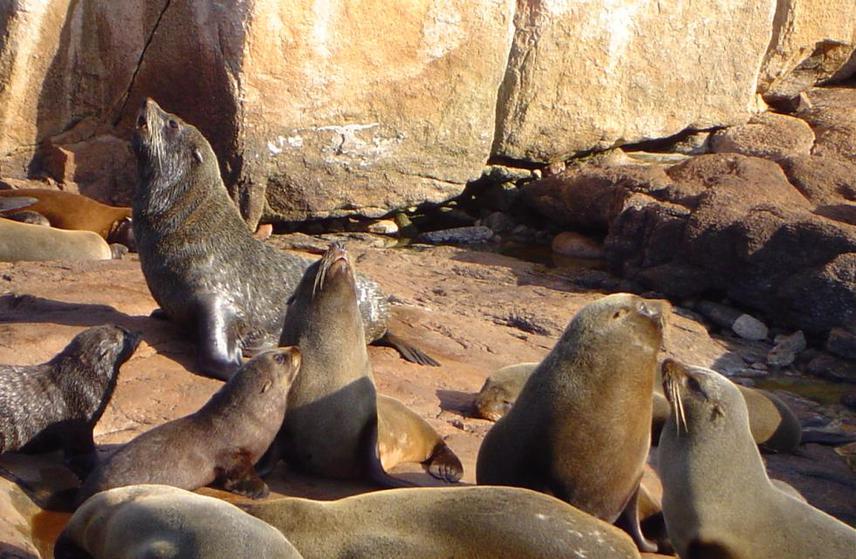Valentina Franco Trecu
Other projects
15 Mar 2010
A Comparative Study of the Foraging Strategy and Trophic Oerlap of Two Sympatric Otariids, Otaria flavescens and Arctocephalus australis from Isla de Lobos, Uruguay: Implications for Conservation
The main objective of this project is to investigate the demographic factors that are responsible for observed trends (opposite) among two otariids species and colonies.

©A. Ponce de León.
Two otariid species currently breed in the Atlantic coast of Uruguay: the South American fur seal (SAFS) and sea lion (SASL). The former species was heavily exploited in Uruguay (273,000 individuals in 1950-1991; DINARA). The population size has been estimated in 300,000 individuals and continues to grow (Páez 2000). Whereas SASL was also heavily harvested in Uruguay (at least 47,000 pups in 1963-1986; DINARA) but its population (estimated by simulation in 2004) as 12,000 (Páez 2006) has not shown signs of recovery. Moreover, SASL trend is opposite in two colonies (Isla de Lobos and Cabo Polonio) 150km apart.
These two species (SAFS and SASL) were selected as focal conservation issues during the incorporation of Cabo Polonio into the National System of Protected Areas (SNAP). However, because the methodology used (based on pup counts) by DINARA (National Administration of Aquatic Resources) is neither longitudinal nor individual-based, it cannot estimate the actual abundance and population parameters such as age-dependent survival and breeding success for each species. These key demographic parameters were identified in SNAP workshops during 2010 as critical information necessary to assess their current and the future status and to develop effective management and conservation plans for these species in Uruguay.